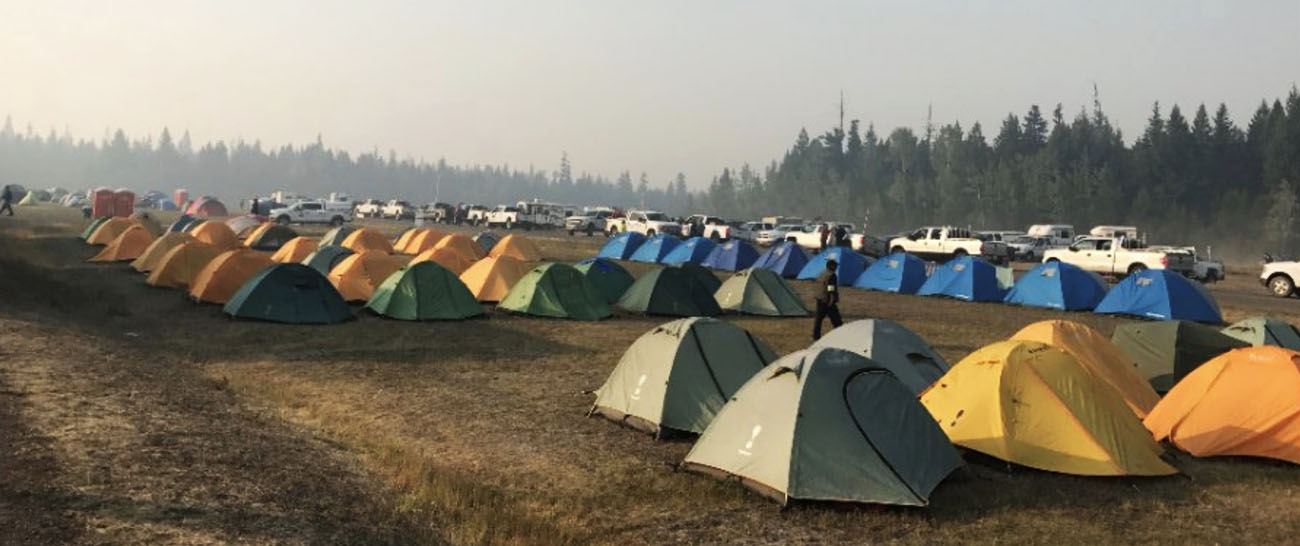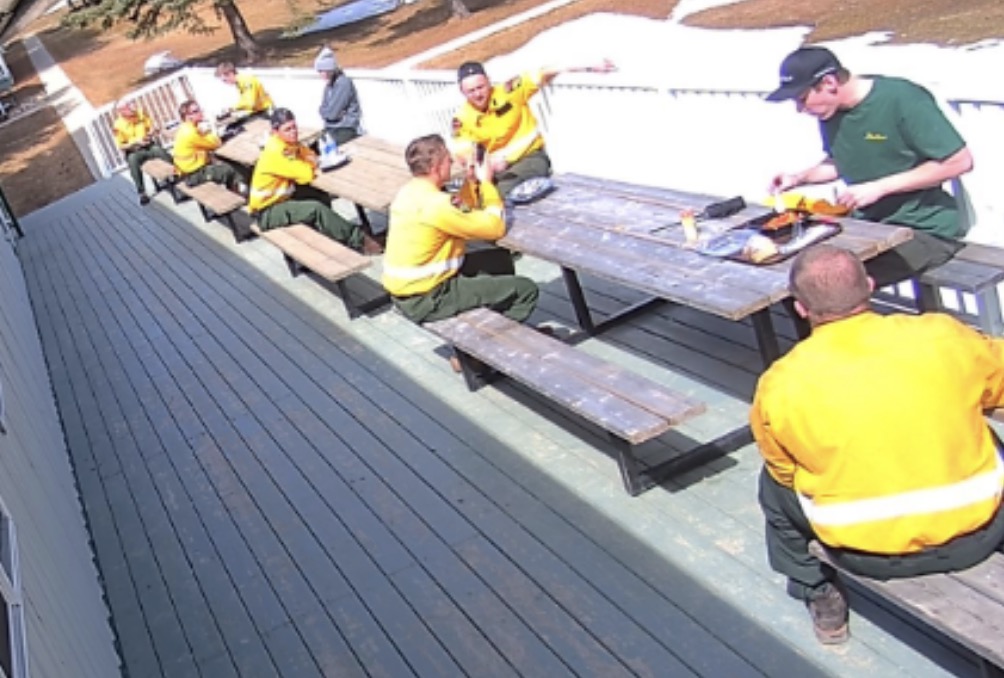
Alberta Wildfire has hired an extra 200 firefighters for the 2020 season in response to the COVID-19 pandemic.
Their objectives in wildfire suppression remain to contain the spread of a fire spread by 10:00 a.m. the following day, and to initiate suppression before the fire exceeds two hectares (4.9 acres) in size.
Like their counterparts in the United States, the agency tasked an Incident Management Team to develop a response plan to ensure they can safely and effectively manage wildfires during the pandemic. They reviewed how the agency fights wildfire and adopted best practices on physical distancing, hygiene, travel, and isolation.
All firefighters will complete a screening form prior to starting each shift.
Special procedures have been established for fire camps:
- There will be greater availability of hand washing stations at all wildfire facilities.
- Surfaces in washrooms and common areas will be cleaned more frequently.
- The number of people gathering in one location will be limited (for example: outdoor dining will be encouraged).
- Physical distancing measures will be observed where possible. Training will be conducted by webinar and in smaller groups rather than in one large central location.
- Buffet-style meals will be discontinued. Food will instead be plated and served, or individually bagged.
- Staff quarters will be reduced to single room occupancy in permanent camps or single occupancy tents.
- The use of contracted camps, hotels and tents will be increased to supplement our operations when needed.
- When traveling in vehicles and helicopters, where physical distancing is not an option, additional precautionary measures will be taken, including ensuring all parties wear appropriate facial covering/non-medical masks.
- New protocols will ensure equipment and frequently-touched surfaces in vehicles and helicopters are sanitized regularly.
- Camp contractors must meet new requirements to protect staff. This includes requirements for meal service and cleaning, as well as providing additional facilities and equipment as needed to reduce the risk of contamination.
- The health of staff will be monitored regularly and those suspected of infection will be immediately isolated and treated.
A fire ban was introduced in the Forest Protection Area of Alberta as well as in Alberta Provincial Parks to reduce the number of human-caused wildfires and help firefighters focus on existing wildfires. An off-highway vehicle restriction was also introduced using a phased approach based on hazard. The fines for not complying with a fire ban or OHV restriction were doubled, to further reduce the number of human-caused wildfires.

In addition to these deterrents, the Government of Alberta announced an investment of $5 million to create an extra 200 firefighting positions. An additional $20 million in FireSmart funding was announced to go towards projects that will reduce the risk to communities caused by wildfire.

It’s very odd they hired 200 more after punting the RapaAttack program. The vital role of access which these folks give you in spades will be sorely missed. By far the best Helipad builders anywhere in Canada. Also Alberta is having very cold and wet fire season so the lads will likely be doing more sand bagging then firefighting
What’s not articulated is the continual lay off plan for permanent staffing or the abolishment of the rappel program. Misstated facts such as “ rappel only accounts for 2% of IA ,” when in fact it’s 23% just doesn’t make sense.
I would love to see the US adopt the same attitude and measures towards this.